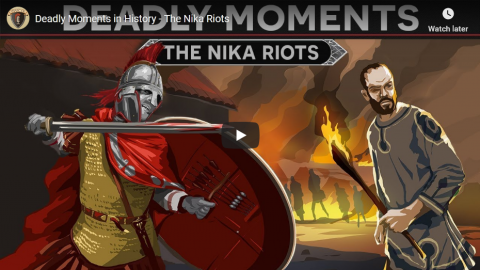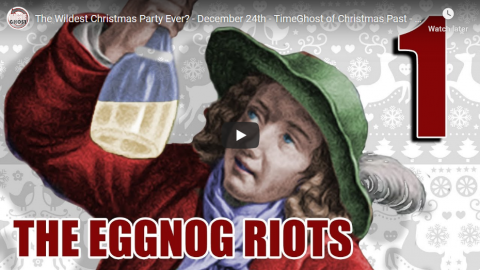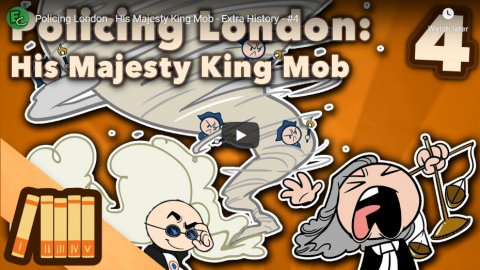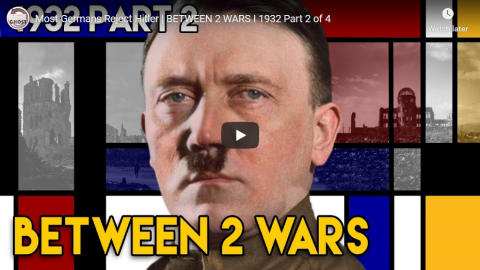Something that has been noticeable for a long time now is that the Left is in a perpetual state of rage. The smallest things send them into spasms of anger. They hate Trump and they really hate his voters. They will go rummaging around in the social media history of people, looking for reasons to hate them. It’s not a general all-encompassing hate, like hating the fans of a rival sports team, but a very personal and cruel hate. They want the victim to suffer and they want to enjoy his suffering.
One reason for this, obviously, is that many people attracted to the Left are mentally unstable, so their politics are just a vehicle for their pathology. Many of the Antifa people, for example, have no coherent political thoughts. They just like being crazy on the streets and causing mayhem. This is the type of person who was attracted to the riots that used to follow the big economic summits. There was never any purpose to their rampages, other than the thrill of smashing things and causing mayhem.
Another more important reason for the rage is the nature of leftist politics in our post-national age. Being on the Left no longer means joining a group that has a tangible enemy, against whom the group throws themselves. The days of unionist, socialists and communists operating as collectives are gone. Even the post-modern movements like climate change and sexual politics is atomized. Much of it is backed by the sorts of people the Left used to oppose like rich people and business.
The Z Man, “It’s Personal”, The Z Blog, 2019-11-12.
January 16, 2020
QotD: Progressive hatred
January 13, 2020
Deadly Moments in History – The Nika Riots
Invicta
Published 27 Feb 2018We relive the deadly Nika Riots which brought the Emperor Justinian to his knees and resulted in the death of 30,000 civilians. In our journey we will explore the history of chariot racing, the undercurrents of dissent, and the blow by blow unfolding of the riot.
Support future documentaries: https://www.patreon.com/InvictaHistory
Twitter: https://twitter.com/InvictaHistoryDocumentary Credits:
Research: Invicta and Luas McCahill
Script: Invicta
Artwork: Robbie McSweeney
Editing: Invicta
Music: Total War Soundtrack, Dreamnote, RecognitionLiterary Sources
–History of the Wars, I by Procopius
–Empress Theodora by J. A. S. Evans
–Justinian: The Last Roman Emperor by G. P. Baker
December 25, 2019
The Wildest Christmas Party Ever? – December 24th – TimeGhost of Christmas Past – DAY 1
TimeGhost History
Published 24 Dec 2019The first day of TimeGhost of Christmas is about a legendary Christmas Party bearing the equally legendary name of “the Eggnog Riots”, which took place on Christmas Eve in 1826 at the Military Academy at West Point, New York.
Join us on Patreon: https://www.patreon.com/TimeGhostHistory
Hosted by: Indy Neidell
Written by: Joram Appel and Spartacus Olsson
Directed by: Spartacus Olsson and Astrid Deinhard
Executive Producers: Bodo Rittenauer, Astrid Deinhard, Indy Neidell, Spartacus Olsson
Creative Producer: Joram Appel
Post-Production Director: Wieke Kapteijns
Research by: Joram Appel
Edited by: Mikołaj Cackowski
Sound design: Marek KamińskiColorizations by:
Norman Stewart – https://oldtimesincolor.blogspot.com/
Dememorabilia – https://www.instagram.com/dememorabilia/Sources:
NYPL Digital Collections
From the Noun Project:
Wine by Ayub Irawan
Drunk by Ates Evren Aydinel
Whisky by Made by Made
Rum by Andreja Kirma
clock by Maurício BritoSoundtracks from Epidemic Sound:
Howard Harper-Barnes – “A Sleigh Ride Into Town”
Etienne Roussell – “A Winter’s Night”
Mike Franklyn – “Christmas Bliss”A TimeGhost chronological documentary produced by OnLion Entertainment GmbH.
December 23, 2019
Policing London – His Majesty King Mob – Extra History – #4
Extra Credits
Published 22 Dec 2019John Fielding, Henry Fielding’s brother, took over the Bow Street Runners after his brother’s death. He was well known as a man who could identify over 3,000 criminals by voice alone. After all, he was blind. But his real contribution to policing was his organizational skills. He created the first Central Database of stolen goods and suspect descriptions and published papers that included not only London criminals but also descriptions of criminals wanted by other prisons in the country. And while the courts may have loved him, the public was much more skeptical. These were times marked by distrust in authority and having a criminal database seemed like an intrusion on personal liberty. What was required to change public opinion?
Join us on Patreon! http://bit.ly/EHPatreon
November 23, 2019
QotD: Populism and democracy
As I have previously confessed, I became a Tory at the age of six. This was riding home from St Anthony’s, on the crossbar of our family servant’s bicycle, through an angry crowd in Lahore. He’d been sent to fetch me from danger. This beloved man, Bill, whose turban revealed him to be a Christian, chose a long route home, to skirt the crowd. But there was no avoiding them, and in the course of our wild ride, I distinctly remember blood and corpses. The crowd was demanding, as I recall, death for the hostages from a hijacked Indian aeroplane, but in the absence of its intended victims, began taking its violence out on itself. Yairs, a lurid spectacle.
I was not so precocious: it took me twenty more years to sort out what I might mean by the word “Tory.” But the view itself began in Hobbesian fear, that day, with my discovery that “the people” stink. They are mindless animals, and put some wrath in them, they will lose their bashfulness. And of course, not only in West Pakistan; for gradually one makes the further discovery that “the people are the people are the people” everywhere. They need to be tamed, cautioned, repressed, sometimes caged. My response to misty-eyed rhetoric for “democracy” is unfavourable. “Populism” is, in my sight, unambiguously evil — even when its cause be, for the moment, just. Given more time, and the inevitable failure to achieve immediate goals, the cause itself will turn rancid.
David Warren, “Crowds & powers”, Essays in Idleness, 2016-11-08.
November 22, 2019
The Far Right French Revolution | BETWEEN 2 WARS I 1934 Part 4 of 4
TimeGhost History
Published 21 Nov 2019In February 1934, France threatens to go down the same political rabbit hole as Germany: anti-Semitic Fascism, but the French extremists are not quite as well organized as the Nazis.
Join us on Patreon: https://www.patreon.com/TimeGhostHistory
Hosted by: Indy Neidell
Written by: Francis van Berkel & Spartacus Olsson
Directed by: Spartacus Olsson and Astrid Deinhard
Executive Producers: Bodo Rittenauer, Astrid Deinhard, Indy Neidell, Spartacus Olsson
Creative Producer: Joram Appel
Post-Production Director: Wieke Kapteijns
Research by: Francis van Berkel
Edited by: Daniel Weiss
Sound design: Marek KamińskiColorizations: Klimbim/Olga Shirnina: https://klimbim2014.wordpress.com
Daniel Weiss, Oleg M, Dememorabilia, Julius Jääskeläinen, Adrien Fillon.A TimeGhost chronological documentary produced by OnLion Entertainment GmbH.
From the comments:
TimeGhost History
52 minutes ago
We now get to some fascinating stuff that is less known outside of France. The events in 1934 will not create a new Fascist state, but they will have deep impact on how France deals with WW2. The February crisis influences military policy, the civilian response, and the way both right wing and left wing political parties deal with the German invasion and occupation. In the next couple of weeks we will come out with a War Against Humanity episode on the WW2 channel about the beginning of French collaboration and resistance — this episode provides essential background to how that plays out in 1940.
September 20, 2019
Most Germans Reject Hitler | BETWEEN 2 WARS I 1932 Part 2 of 4
TimeGhost History
Published on 19 Sep 2019After Chancellor Brüning has run Germany’s economy into the ground, the country is once again going to the polls. It’s a wild brawl between reason and madness, populism and stability, and democracy and tyranny focused on who will unite Germany if Germany even can be united again …
Join us on Patreon: https://www.patreon.com/TimeGhostHistory
Subscribe to our World War Two series: https://www.youtube.com/c/worldwartwo…
Hosted by: Indy Neidell
Written by: Spartacus Olsson
Directed by: Spartacus Olsson and Astrid Deinhard
Executive Producers: Bodo Rittenauer, Astrid Deinhard, Indy Neidell, Spartacus Olsson
Creative Producer: Joram Appel
Post-Production Director: Wieke Kapteijns
Research by: Spartacus Olsson
Edited by: Wieke Kapteijns
Sound design: Marek KamińskiSources: Icon german parliament: Gerald Wildmoser. Graphic German Reichstag: Liambaker98. Images: Bundesarchiv.
A TimeGhost chronological documentary produced by OnLion Entertainment GmbH.
From the comments:
TimeGhost History
3 hours ago
This year it will be 85 years ago that Germany elected the Nazis to power, or will it? Well … as most events in history it isn’t quite that simple. There is no majority for anything in Germany at this point. You see, in 1932 Germany is still a diverse, democratic state. But it’s been under attack for many years now by populist, partisan interests tearing it apart into fractious, sometimes destructive opposite forces. In essence, they can be grouped into three camps:1. the mainstream centrist parties on the left and right that want a parliamentary, socially tolerant democracy.
2. the far left that wants to overthrow the parliamentary democracy and start a revolution to create an authoritarian, socially ultra-liberal, rule by the working class
3. the far right that wants to overthrow the parliamentary democracy to create a totalitarian, socially reactionary, rule by a strong man.Now, that is the left to right landscape and as you shall see that is also how the election results play out in alliances. So try your best to get rid of your prejudices and preconceived notions — because for many of you things are not the way that you have been told. And if for no other reason than saving us the trouble of having to police these comments too much — please, please try to remember our rules. They are not there to quash freedom of speech — they are there so that we can keep the comment sections turned on. When we don’t police them it never takes long for videos like this to descend into a hatefest full of death threats and calls for mass murder. You might think that’s cool, but we don’t and we know that most of the world doesn’t so respect that — for the sake of democracy if nothing else.
January 19, 2019
Stopper 37mm: A Simple South African Riot Control Gun
Forgotten Weapons
Published on 29 Dec 2018http://www.patreon.com/ForgottenWeapons
Cool Forgotten Weapons merch! http://shop.bbtv.com/collections/forg…
The Stopper is a simple 37mm single shot riot control gun designed by Andries Piek in 1980. The South African police services were at that time using 37mm guns made by Federal Labs in the US, dating back to the 1930s, and the international embargo on South Africa made it impossible to get parts and do basic maintenance on those arms. So Piek (whose other work included the BXP carbine/SMG and design improvements to the LDP/Kommando) whipped out the Stopper in all of two weeks to provide a new domestic-production 37mm weapon for the police.
The Stopper is a simple break-action gun, with a manually cocked, single action, hammer-fired trigger mechanism. Two versions were made, one with the front grip and one without, and all were fitted with collapsing stocks. Production began in 1982 and ran until 1999, by Mitco Special Products under the Milkor name.
As an interesting postscript, Piek was inspired by seeing Christopher Walken using a Mannville 25mm revolving gas gun in the movie Dogs of War to make something similar in 37mm or 40mm. The gun he designed to this end became the Milkor MGL, adopted by South Africa in 1983 and by the US Marine Corps in 2005.
Contact:
Forgotten Weapons
PO Box 87647
Tucson, AZ 85754
November 18, 2018
The Toronto Circus Riot of 1855
The History Guy: History Deserves to Be Remembered
Published on 26 Oct 2018In 1855 Toronto, a fireman and a clown walked into a brothel. What followed would change the course of one of the world’s great cities.
The episode is intended for educational purposes. All events are portrayed in historical context. No graphic depictions of violence are included.
The History Guy uses media that are in the public domain. As photographs of actual events are sometimes not available, photographs of similar objects and events are used for illustration.
Patreon: https://www.patreon.com/TheHistoryGuy
The History Guy: History Deserves to Be Remembered is the place to find short snippets of forgotten history from five to fifteen minutes long. If you like history too, this is the channel for you.
November 10, 2018
Hitler’s Beer Hall Disaster I BETWEEN 2 WARS I 1923 Part 1 of 2
TimeGhost History
Published on 10 Nov 2018When Germany spirals into hyperinflation and the French occupy the Ruhr, Adolf Hitler and Erich Ludendorff make a grab for power.
Join us on Patreon: https://www.patreon.com/TimeGhostHistory
Hosted by: Indy Neidell
Written and directed by: Spartacus Olsson
Writing and Research Contributed by: Rune V. Hartvig
Produced by: Astrid Deinhard
Executive Producers: Bodo Rittenauer, Astrid Deinhard, Indy Neidell, Spartacus OlssonArchive by Screenocean/Reuter https://www.screenocean.com
A TimeGhost chronological documentary produced by OnLion Entertainment GmbH
And from the comments:
We jump ahead briefly to 1923 as this week is the anniversary of the Hitlerputsch and the Georg Elser Bomb in 1939. We will return to part 4 of 1920 in shortly. Many thanks to Rune V. Hartvig for contributing to the writing of this episode.
READ BEFORE YOU COMMENT: This episode was recorded before we had our studio, therefore our the sound is not great. Also READ OUR RULES:
RULES OF CONDUCT
STAY CIVIL AND POLITE we will delete any comments with personal insults, or attacks.
AVOID PARTISAN POLITICS AS FAR AS YOU CAN we reserve the right to cut off vitriolic debates.
HATE SPEECH IN ANY DIRECTION will lead to a ban.
RACISM, XENOPHOBIA, OR SLAMMING OF MINORITIES will lead to an immediate ban.
PARTISAN REVISIONISM, ESPECIALLY HOLOCAUST AND HOLODOMOR DENIAL will lead to an immediate ban.Thanks for reading, and now…. let’s make history!
November 8, 2018
80 years on from Kristallnacht
Jerrold Sobel reminds us that 80 years ago today, the Nazis got their desired pretext to launch a domestic terror campaign against the Jews:

Destroyed shopfront of a Jewish business in Magdeburg, November 9, 1938.
Photo Bundesarchiv Bild 146-1979-046-19, via Wikimedia Commons.
Hitler came into power in 1933 with a plan to expand Germany’s rule and to completely annihilate world Jewry. During this time between his ascension and 1938, progressively strident anti-Semitic laws known as the Nuremberg Laws were enacted in which governmental policies regulated every aspect of Jewish life.
As conditions increasingly worsened for Jews, a Polish Jewish student, Herschel Grynszpan, whose family was being deported after a lifetime living in Germany, acted out against the Nazis and assassinated a German diplomat, Ernst vom Rath, on November 7, 1938. Hitler could not have been happier: it was the pretext he had been seeking to up the ante of anti-Semitism from “law-based” to mob violence.
By November 9, rioting was already in full swing in all quarters of the Reich, which by this time included Austria. Minister of propaganda Josef Goebbels encouraged Hitler to allow further punishment of the Jews through more “spontaneous demonstrations” of violence. According to Goebbels’s diary, Hitler responded: “[D]emonstrations should be allowed to continue. The police should not be withdrawn. For once the Jews should get the feel of popular anger.”
And did they ever. On the nights of November 9 and 10, 1938, unspeakable assaults upon Jewish women and men took place in Germany and Austria. When the majority of the mayhem finally ended on November 11, 30,000 Jewish men had been arrested and taken to concentration camps. Although figures vary, at least 100 fatalities were initially reported, the number growing into the hundreds due to subsequent mistreatment of those arrested.
Over 1,400 synagogues were burnt to the ground, and more than 7,500 businesses were likewise looted and torched. Jewish hospitals, homes, and schools fared no better. Those two nights of havoc would ignominiously become known as Kristallnacht: the night of the broken glass.
Soon, the world came to know the depredations wrought upon the Jewish people those nights. It was just the beginning, a precursor to the greatest ethnic mass murder of a people in the history of the world: the Holocaust.
September 3, 2013
QotD: Some things never change, military division
Then for the first time since I had left the Kotwali I had a moment to run over in my mind the actions I had taken during the last half-hour. The soldier always knows that everything he does on such an occasions will be scrutinized by two classes of critics — by the Government which employs him and by the enemies of that Government. As far as the Government is concerned, he is a little Admiral Jellicoe and this his tiny Battle of Jutland. He has to make a vital decision on incomplete information in a matter of seconds, and afterwards the experts can sit down at leisure, with all the facts before them, and argue about what he might, could, or should have done. Lucky the soldier if, as in Jellicoe’s case, the tactical experts decide after twenty years’ profound consideration that what he did in three minutes was right. As for the enemies of the Government, it does not much matter what he has done. They will twist, misinterpret, falsify, or invent any facts as evidence that he is an inhuman monster wallowing in innocent blood.
Field Marshal William Slim, “Aid to the Civil”, Unoficial History, 1959.
July 1, 2013
Egypt’s Muslim Brotherhood HQ attacked
In the Guardian, Patrick Kingsley reports on the latest troubles in Cairo:
The headquarters of Egypt’s Muslim Brotherhood have been burned and ransacked following an all-night siege — one day after millions protested on Egypt’s streets calling for President Mohamed Morsi’s resignation.
In an episode reminiscent of the sacking of Hosni Mubarak’s political headquarters during Egypt’s 2011 uprising, around 50 anti-Brotherhood protesters spent the night attacking the compound — situated on a rocky, isolated outcrop in east Cairo — with molotov cocktails, causing a series of small fires and explosions.
With police nowhere to be seen, Brotherhood cadres returned fire, killing at least four, and injuring at least 80 — according to medics at the scene.
Both sides told the Guardian that the other had started the battle, which began at around 7pm on Sunday. It was not possible to verify either claim.
At roughly 7am, after 12 hours of fighting, Brotherhood reinforcements arrived — possibly, bystanders said, because one of the fires had grown too big, and those inside now feared being smoked out. The reinforcements covered their colleagues’ exit with live fire — the Guardian later saw bullets being plucked from the wall. Bystanders said that some Brotherhood members were injured and handed to the authorities during the blaze.
Update:
The Egyptian army has given parties 48 hours to resolve political crisis, or it will 'take responsibility'
— BBC Breaking News (@BBCBreaking) July 1, 2013
April 2, 2012
The August riots: another study that finds exactly what it expects to find
Neil Davenport on the most recent report on the causes of the August riots in Britain:
Once again, an independent panel, this time set up by the government, rolls out a rehearsed number of ‘social factors’ to explain away the disturbing events: unemployment and lack of opportunities for young people; ‘forgotten families’; police harassment and a widespread ‘culture of materialism’. The panel, which visited 21 communities and interviewed thousands of people affected by the riots, says its wide-ranging recommendations ‘must be enacted together’ if the risk of further riots is to be reduced. In a conclusion that bizarrely echoes Tony Blair’s time in office, panel chair Darra Singh says that everyone must have a ‘stake in society’. It makes you wonder why ‘stakeholder society’ policies didn’t actually work in the first place.
[. . .]
None of the enquiries have examined the broad cultural changes that have taken place in British society which, more often than not, are institutionalised in English schools and other state agencies. In fact, this is the ‘social context’ that ought to preoccupy researchers, not the handwrung staples of poverty and unemployment. To approach the riots in this way is not to rehearse ‘teachers aren’t strict enough’ platitudes. It is to examine the kind of destructive values that have been passed down from the top of society: namely, the fostering of assertive victimhood whereby nobody is expected to be accountable for their own actions. It really is somebody else’s fault.
What every schoolchild learns from an early age is that both emotional hurts and tick-box disadvantages — from minor medical problems to class/ethnic background — constitute a person’s default status. It is only by placing demands on state providers that these ‘hurts’ are temporarily assuaged. This is what is meant by a culture of entitlement — victim status has to be recognised and then rewarded by state providers. The higher the perceived victim status, the greater the expectation that somebody else must make provisions or allowances (or even an educational maintenance allowance). In this sense, looting from JD Sports becomes justified, even acceptable, because of the expectations that somebody must pay for a looter’s inflated sense of grievance.
Indeed, many of August’s looters rolled out a lexicon of ‘hurts’ in order to justify their destructive, anti-social behaviour. According to this cultural script, social solidarities are entirely alien because young people have been socialised to dwell on their self-esteem above all else. Far from other people or a wider community being a source of support, they are more often seen as a target for all sorts of imaginary grievances. Local shopkeepers and random individuals attacked during the August riots were, in some way, being held responsible for young people’s poverty and lack of employment prospects. As one of the blasé looters put it, ‘we wanted to show the rich that we can do what we want’. If young people have grown up with the belief that they are automatically held back by social disadvantages, often promoted by state agencies themselves, then a local community itself can become a target for retribution.
[. . .]
Once again, another report on last August’s riots is an exercise in advocacy research, whereby the research neatly matches already rehearsed conclusions. The government panel’s recommendations, failing to recognise the profound significance of the riots, follow the line of wishful thinking and delusion pursued by radical commentators. Furthermore, the panel’s instinctive elitism simply echoes the radical left’s own distrust of ordinary people. Institutionalising the claim that most people are naturally incapable and useless is what destroyed informal communities in the first place. As the nannying, hectoring tone of the latest report into the riots shows, what could be more morally debilitating and soul-destroying?
October 25, 2011
Gangs not to blame for London’s August riots
Brendan O’Neill debunks the widespread story that the August riots were either gang-led or pre-planned by gangsters:
In the aftermath of the riots, police, politicians and penmen all arrived at the same conclusion: gangs have taken over parts of England. Organised cliques of mask-wearing, territory-protecting youth, who divide themselves into ‘elders’, ‘soldiers’ and ‘youngers’, are turning bits of London and other English cities into something akin to south-central LA. These gangs orchestrated the violence, we’re told, as a way of staking their claim over local patches of land and warning off the ‘Feds’ (police). It is now apparently time, says David Cameron, for a war against ‘gang culture’.
There’s only one problem with these claims: they are complete and utter bunkum. No doubt gangs exist in some parts of urban England, and no doubt some of them are criminal. But there is no ‘gang culture’ and gangs were not responsible for the recent rioting in London and elsewhere. ‘Gang culture’ is almost entirely the imaginary creation of a political elite which prefers to fantasise that urban implosion is a product of gang conspiracies, rather than face up to the harsh reality that the riots were triggered by the twin crises of community solidarity and state authority.
[. . .]
Perusing the press, it was hard to tell if you were reading genuine reports about English cities or drafts for a movie about the life and times of 50 Cent. ‘Inside the deadly world of gangs’, screamed newspaper headlines, inviting readers to peer at these violent groups where new recruits as young as nine are referred to as ‘Tinies’ or ‘Babies’, while teenage members are known as ‘Soldiers’ and the overlords have the title ‘General’. Apparently there are 171 such gangs in London alone. Journalists write about being ‘embedded’ with the police, as if they’re in Iraq rather than England, and observing an ‘inner-city underworld’. This underworld exploded into the overworld two weeks ago, we’re told, when these military-style gangs ‘orchestrated’ looting through social media or by ‘laying on minibuses to ferry yobs into and around towns’.
[. . .]
Often, the hotheaded claims about Britain being overrun with hundreds of gangs simply do not stand up to scrutiny. So the Metropolitan Police claims there are 171 gangs in London, while the Home Office says there are 356 gang members in London. As one study pointed out, this would mean ‘around two people per gang’








